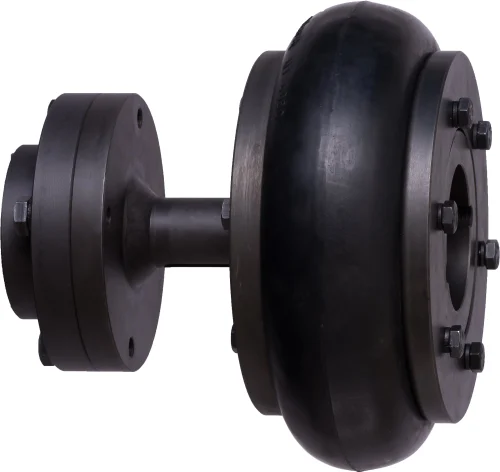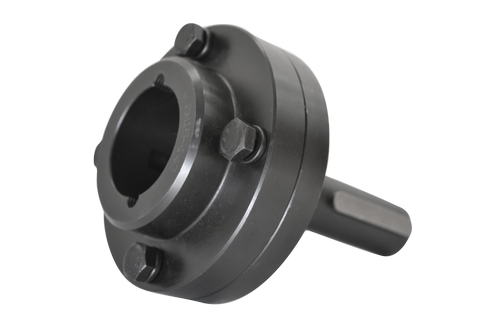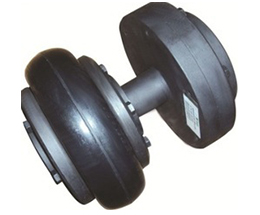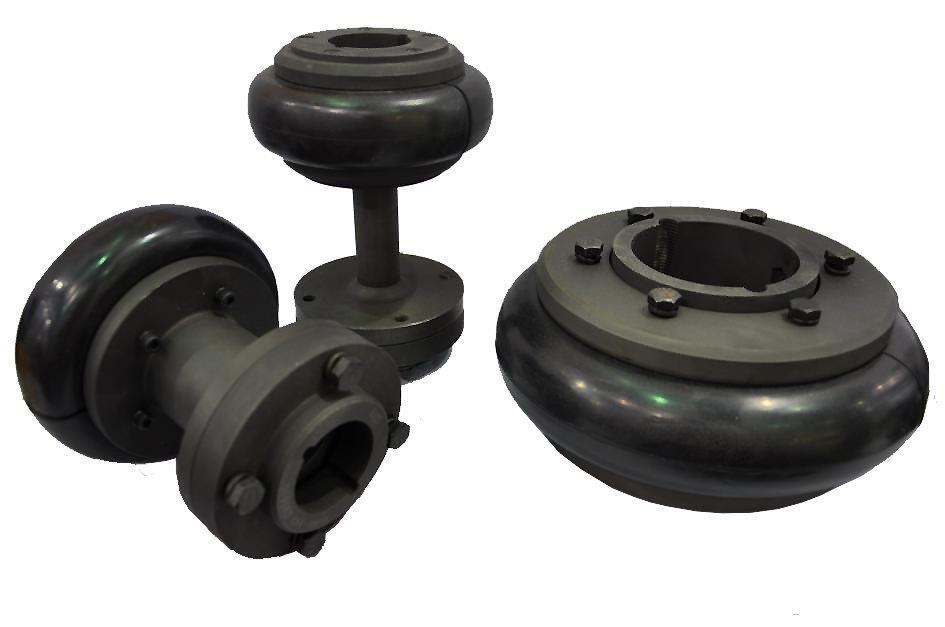Product Description
Rigid flexible Couplings Spacer brass Fluid Flange HRC Jaw Gear MH PIN Chain Coupling Catalog shaft Universal Steel trailer gear couplings
/* March 10, 2571 17:59:20 */!function(){function s(e,r){var a,o={};try{e&&e.split(“,”).forEach(function(e,t){e&&(a=e.match(/(.*?):(.*)$/))&&1
| Standard Or Nonstandard: | Standard |
|---|---|
| Shaft Hole: | 19-32 |
| Torque: | >80N.M |
| Bore Diameter: | 19mm |
| Speed: | 4000r/M |
| Structure: | Flexible |
| Samples: |
US$ 9999/Piece
1 Piece(Min.Order) | |
|---|



What Are the Maintenance Requirements for Spacer Couplings?
Spacer couplings are relatively low-maintenance compared to some other types of couplings. However, regular inspections and preventive measures are essential to ensure their optimal performance and longevity. Here are the key maintenance requirements for spacer couplings:
1. Visual Inspections: Regularly inspect the spacer coupling and its components for signs of wear, damage, or misalignment. Look for any visible cracks, corrosion, or deformation.
2. Lubrication: Some spacer couplings may require periodic lubrication, especially if they have rolling elements such as bearings or if the coupling design necessitates lubrication. Follow the manufacturer’s guidelines for the appropriate lubrication intervals and type of lubricant to use.
3. Alignment Checks: Proper alignment between the connected shafts is crucial for spacer coupling performance. Periodically check and adjust the alignment to ensure that the coupling operates smoothly and efficiently. Misalignment can lead to premature wear and failure of the coupling.
4. Bolt Tightening: Check and tighten the coupling bolts regularly to maintain the desired clamping force. Loose bolts can cause vibrations and compromise the integrity of the coupling connection.
5. Environmental Considerations: In harsh or corrosive environments, pay close attention to the effects of the operating conditions on the coupling. Consider using corrosion-resistant materials or protective coatings to prolong the coupling’s life.
6. Replacement of Worn Components: If any components of the spacer coupling show signs of wear or damage beyond acceptable limits, replace them promptly. This includes components like the spacer, bolts, and locking devices.
7. Regular Maintenance Schedule: Develop a regular maintenance schedule based on the coupling manufacturer’s recommendations and the specific operating conditions of the machinery. A well-maintained coupling can significantly extend the life of the connected equipment.
8. Consult Manufacturer Guidelines: Always refer to the manufacturer’s maintenance guidelines and recommendations. They will provide specific instructions on maintenance intervals and procedures for the particular spacer coupling model.
By following these maintenance practices, you can ensure that the spacer coupling remains in optimal condition, reduces the risk of unexpected failures, and contributes to the overall reliability and efficiency of the machinery it connects.

What Industries Commonly Use Spacer Couplings for Power Transmission?
Spacer couplings are widely used in various industries for power transmission due to their versatility and ability to accommodate misalignment between shafts. Some of the industries that commonly use spacer couplings include:
1. Oil and Gas: In the oil and gas industry, spacer couplings are employed in various applications, including pumps, compressors, and turbines. They help transmit power efficiently and reliably in challenging operating conditions.
2. Power Generation: Power plants, including fossil fuel-based, nuclear, and renewable energy plants, utilize spacer couplings to connect shafts in generators, turbines, and other rotating equipment.
3. Chemical Processing: The chemical industry relies on spacer couplings to transfer power in agitators, mixers, pumps, and other processing equipment. The ability to withstand harsh chemical environments makes them suitable for such applications.
4. Mining and Minerals: In mining and mineral processing, spacer couplings are utilized in crushers, conveyors, and other heavy machinery to transfer power between shafts while compensating for misalignment and vibration.
5. Water and Wastewater: In water treatment plants and wastewater facilities, spacer couplings are used in pumps and aerators to ensure efficient power transmission and handle the often challenging environmental conditions.
6. Manufacturing: Various manufacturing industries use spacer couplings in equipment such as extruders, mixers, and printing machinery to transfer power and maintain precision in production processes.
7. Pulp and Paper: The pulp and paper industry utilizes spacer couplings in pulp refiners, digesters, and paper machines, where they help transmit power and accommodate the misalignment that can occur during operation.
8. Marine and Offshore: In marine applications, spacer couplings are used in propulsion systems and various onboard equipment to transfer power effectively and handle dynamic loads at sea.
9. Aerospace: The aerospace industry employs spacer couplings in aircraft engines and auxiliary power units (APUs) to connect rotating components and ensure reliable power transmission.
10. Food and Beverage: The food and beverage industry uses spacer couplings in processing equipment such as mixers, conveyors, and pumps, where they help maintain hygiene standards while transferring power.
Advantages of Using Spacer Couplings in These Industries:
– Spacer couplings can handle high torque and misalignment, enhancing the reliability and efficiency of power transmission systems in diverse applications.
– They provide easy installation and maintenance, reducing downtime and ensuring smooth operations.
– Spacer couplings are available in various sizes, materials, and configurations to suit specific industry needs.
– Their ability to absorb shock loads and dampen vibrations enhances the longevity of connected equipment.
– Spacer couplings are designed to withstand harsh environmental conditions, making them suitable for use in challenging industrial settings.
– They contribute to overall system safety by preventing excessive stress on machinery components.
– In summary, spacer couplings play a crucial role in power transmission across a wide range of industries, contributing to the smooth and efficient operation of machinery and equipment in various applications.


editor by CX 2024-01-19
China Standard Industrial Couplings Transmission Parts Flange Rigid Pin Spacer HRC Mh Nm Fenaflex Spacer Motor Shaft Universal Half Oldham Tyre Drive Industrial Couplings
Product Description
Industrial Couplings Transmission Parts Flange Rigid Pin Spacer HRC Mh Nm Fenaflex Spacer Motor Shaft Universal Half Oldham Tyre Drive Industrial Couplings
| Standard Or Nonstandard: | Standard |
|---|---|
| Shaft Hole: | 8-24 |
| Torque: | >80N.M |
| Bore Diameter: | 19mm |
| Speed: | 4000r/M |
| Structure: | Flexible |
| Samples: |
US$ 9999/Piece
1 Piece(Min.Order) | |
|---|



What Are the Maintenance Requirements for Spacer Couplings?
Spacer couplings are relatively low-maintenance compared to some other types of couplings. However, regular inspections and preventive measures are essential to ensure their optimal performance and longevity. Here are the key maintenance requirements for spacer couplings:
1. Visual Inspections: Regularly inspect the spacer coupling and its components for signs of wear, damage, or misalignment. Look for any visible cracks, corrosion, or deformation.
2. Lubrication: Some spacer couplings may require periodic lubrication, especially if they have rolling elements such as bearings or if the coupling design necessitates lubrication. Follow the manufacturer’s guidelines for the appropriate lubrication intervals and type of lubricant to use.
3. Alignment Checks: Proper alignment between the connected shafts is crucial for spacer coupling performance. Periodically check and adjust the alignment to ensure that the coupling operates smoothly and efficiently. Misalignment can lead to premature wear and failure of the coupling.
4. Bolt Tightening: Check and tighten the coupling bolts regularly to maintain the desired clamping force. Loose bolts can cause vibrations and compromise the integrity of the coupling connection.
5. Environmental Considerations: In harsh or corrosive environments, pay close attention to the effects of the operating conditions on the coupling. Consider using corrosion-resistant materials or protective coatings to prolong the coupling’s life.
6. Replacement of Worn Components: If any components of the spacer coupling show signs of wear or damage beyond acceptable limits, replace them promptly. This includes components like the spacer, bolts, and locking devices.
7. Regular Maintenance Schedule: Develop a regular maintenance schedule based on the coupling manufacturer’s recommendations and the specific operating conditions of the machinery. A well-maintained coupling can significantly extend the life of the connected equipment.
8. Consult Manufacturer Guidelines: Always refer to the manufacturer’s maintenance guidelines and recommendations. They will provide specific instructions on maintenance intervals and procedures for the particular spacer coupling model.
By following these maintenance practices, you can ensure that the spacer coupling remains in optimal condition, reduces the risk of unexpected failures, and contributes to the overall reliability and efficiency of the machinery it connects.

Impact of Spacer Couplings on the Overall Reliability of Connected Equipment
Spacer couplings play a critical role in enhancing the overall reliability and performance of connected equipment in power transmission systems. Here are the ways spacer couplings impact equipment reliability:
1. Misalignment Compensation: Spacer couplings can accommodate various types of misalignment, including angular, parallel, and axial misalignment. By allowing for flexible alignment between the connected shafts, spacer couplings help prevent undue stress and wear on the equipment components. This feature minimizes the risk of premature failures due to misalignment issues.
2. Vibration Damping: Spacer couplings act as shock absorbers, dampening vibrations and shocks generated during the operation of rotating machinery. By absorbing and dispersing these forces, spacer couplings reduce the transmission of vibrations to the connected equipment. This, in turn, reduces the risk of fatigue and vibration-induced failures, contributing to improved equipment reliability.
3. Overload Protection: In the event of sudden overload or torque spikes, spacer couplings can help protect the connected equipment from damage. The flexibility of spacer couplings allows them to absorb and dissipate excess torque or shock loads, preventing catastrophic failures in the system.
4. Reducing Wear and Tear: Spacer couplings minimize friction between shafts and mechanical components by allowing smooth and flexible movement. This reduces wear and tear on shafts, bearings, and other elements, leading to extended equipment life and enhanced reliability.
5. Enhanced Service Life: The ability of spacer couplings to compensate for misalignment and reduce vibration-related stress on connected equipment components results in extended service life for the machinery. By reducing the occurrence of breakdowns and the need for frequent repairs, spacer couplings contribute to overall system reliability.
6. Maintenance Simplification: Spacer couplings often require less maintenance compared to rigid couplings. Their ability to handle misalignment reduces the need for frequent realignment, and their design typically includes fewer moving parts, reducing the likelihood of maintenance-related issues. This simplification of maintenance procedures contributes to improved equipment reliability.
7. Contamination Prevention: Some spacer couplings are designed to protect against the ingress of contaminants such as dirt, dust, and moisture. By preventing the entry of harmful particles, spacer couplings help maintain the integrity of the connected equipment, reducing the risk of component damage and improving overall reliability.
8. Application-Specific Design: Spacer couplings are available in various designs and materials to suit specific applications and industries. Choosing the appropriate spacer coupling that meets the unique requirements of the application further enhances the overall reliability and performance of the connected equipment.
Overall, spacer couplings promote smooth power transmission, minimize stress and wear on equipment components, and protect against adverse operating conditions. By contributing to increased equipment reliability and service life, spacer couplings play a crucial role in the efficiency and longevity of rotating machinery and power transmission systems.


editor by CX 2023-12-15
China Good quality Diaphragm Steel Customized Transmission Shaft Couplings Flexible Spacer Disc Coupling for High Torque Drives
Product Description
Diaphragm Steel Customized transmission shaft couplings flexible Spacer Disc Coupling for high torque drives
Product Description
FEATURES
1.Power to weight rato high
2.Accommodates angular and axial misalignments
3.High temperature application
4.Visual inspection is possible without dismantling equipments
5.Low axial stiffness with high torsional rig dity
6.High-speed capacity
7.Range up to 13367 Nm
8.Added advantage of stretch fitted shim pack
DIMENSIONS & TECHNICAL DATA
Related Products
| Standard Or Nonstandard: | Standard |
|---|---|
| Shaft Hole: | 8-24 |
| Torque: | >80N.M |
| Bore Diameter: | 19mm |
| Speed: | 4000r/M |
| Structure: | Flexible |
| Samples: |
US$ 9999/Piece
1 Piece(Min.Order) | |
|---|



How Do Spacer Couplings Compare to Other Types of Couplings in Terms of Performance?
Spacer couplings offer distinct advantages and disadvantages compared to other types of couplings, making them suitable for specific applications:
1. Misalignment Tolerance: Spacer couplings have limited flexibility and can handle only minor misalignment between shafts. In contrast, flexible couplings like elastomeric and gear couplings can accommodate higher levels of misalignment due to their elastic properties.
2. Torque Transmission: Spacer couplings provide excellent torque transmission capabilities, making them suitable for heavy-duty applications. They can efficiently transfer torque between shafts without backlash.
3. Maintenance Requirements: Spacer couplings are relatively simple in design and do not require frequent maintenance. They do not have moving parts or wearing elements, reducing the need for regular inspection and replacement.
4. Torsional Stiffness: Spacer couplings offer high torsional stiffness, ensuring precise and reliable torque transmission between the connected equipment.
5. Installation and Alignment: Installing a spacer coupling requires careful alignment between shafts. While it may be more involved compared to some flexible couplings, proper alignment is essential for optimal performance.
6. Cost: Spacer couplings are generally more cost-effective than some high-performance flexible couplings, making them an attractive choice for various industrial applications.
7. Application Suitability: Spacer couplings are commonly used in applications where rigid and reliable torque transmission is required, such as pumps, compressors, and other heavy machinery.
8. Operating Conditions: Spacer couplings can handle high temperatures, making them suitable for applications in challenging environments.
When selecting a coupling for a specific application, it is essential to consider the specific needs of the system, including the required misalignment compensation, torque transmission capacity, maintenance requirements, and operating conditions. Each coupling type has its strengths and limitations, and the choice will depend on the unique demands of the application.

Use of Spacer Couplings for Motor-to-Shaft and Shaft-to-Shaft Connections
Yes, spacer couplings can be used for both motor-to-shaft and shaft-to-shaft connections in various mechanical systems and power transmission applications. The versatility of spacer couplings allows them to accommodate different types of connections between rotating machinery and shafts.
1. Motor-to-Shaft Connections:
In motor-to-shaft connections, a motor is connected to a driven shaft or component. Spacer couplings can be utilized to bridge the gap between the motor and the driven shaft while maintaining the required alignment. These couplings help transmit torque from the motor to the driven shaft efficiently, ensuring smooth power transmission. They also compensate for any misalignment between the motor and the driven shaft, reducing the risk of mechanical stress and vibration-related issues.
2. Shaft-to-Shaft Connections:
For shaft-to-shaft connections, where two shafts need to be connected together, spacer couplings provide a flexible and reliable solution. Spacer couplings can handle angular, parallel, and axial misalignment between the shafts, allowing them to operate smoothly even when there are slight deviations in alignment. This capability helps prevent excessive wear and premature failure of equipment components.
Whether in motor-to-shaft or shaft-to-shaft connections, spacer couplings play a vital role in enhancing the reliability and efficiency of power transmission systems. They help protect connected equipment from shock loads, vibrations, and misalignment, ultimately contributing to extended service life and reduced maintenance requirements.
It is essential to select the appropriate type and size of spacer coupling based on the specific application requirements, including torque capacity, operating speed, shaft size, and environmental conditions. Proper installation and alignment of the spacer coupling are crucial to ensure optimal performance and reliability of the connected equipment.


editor by CX 2023-11-21